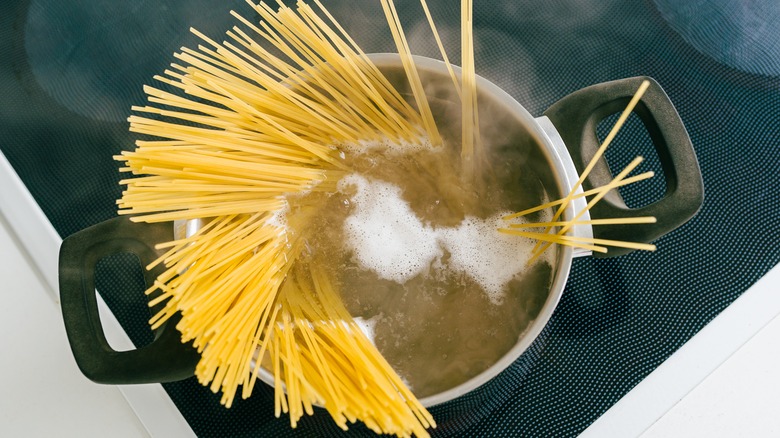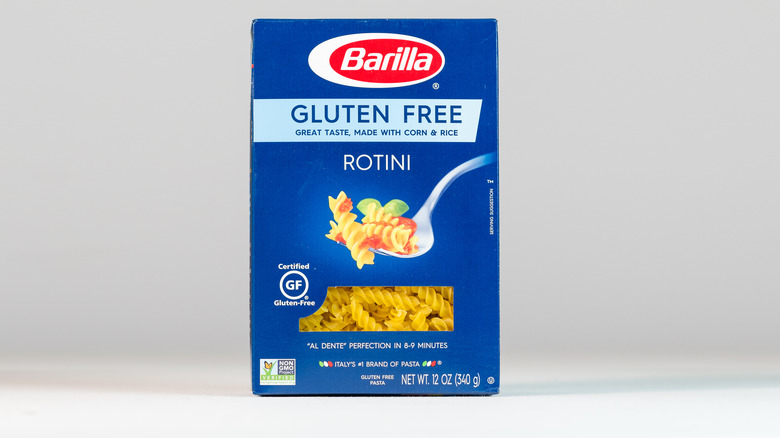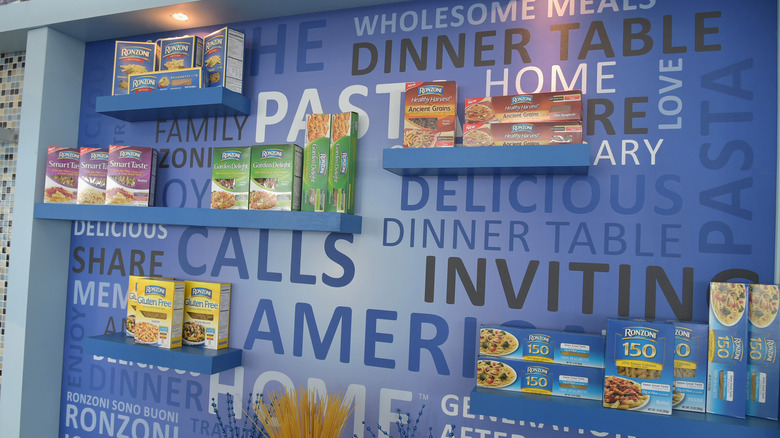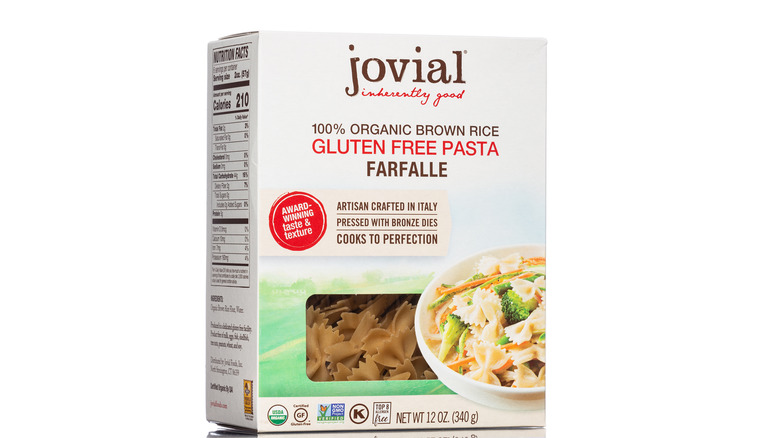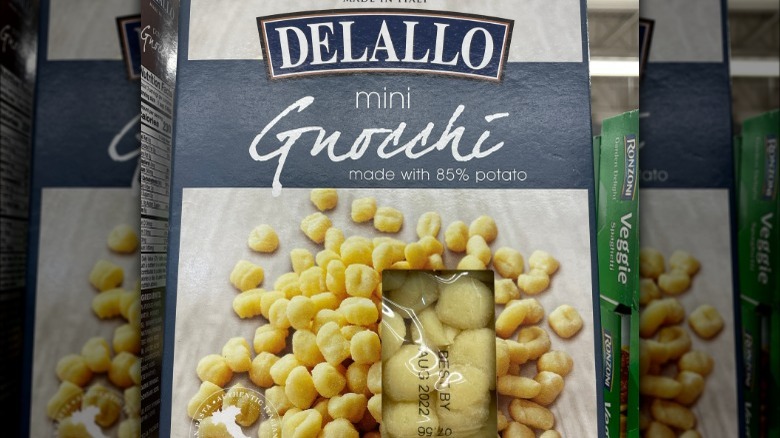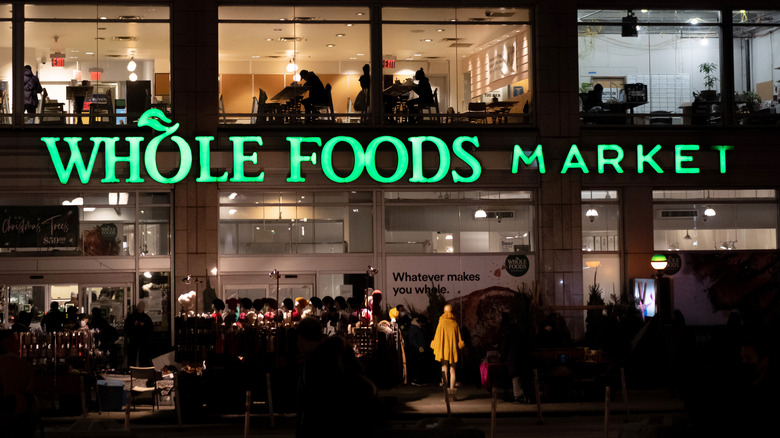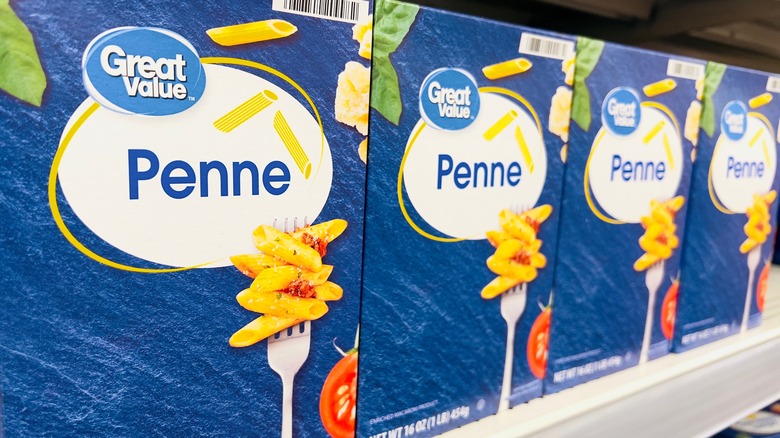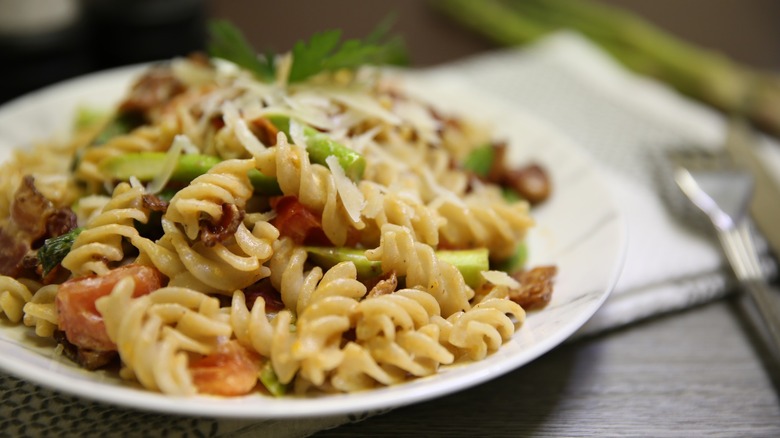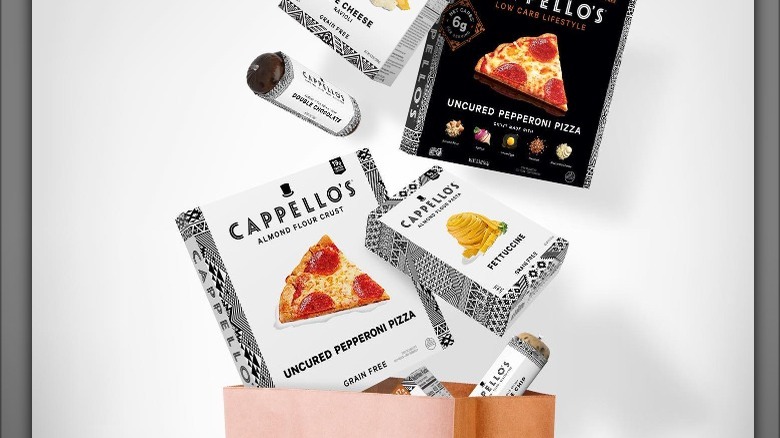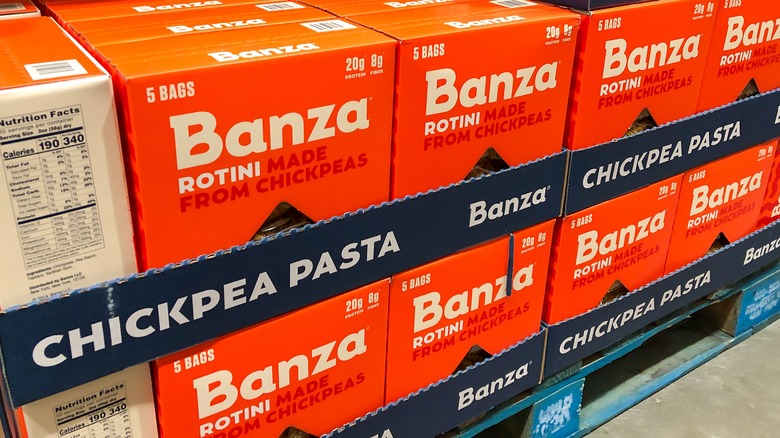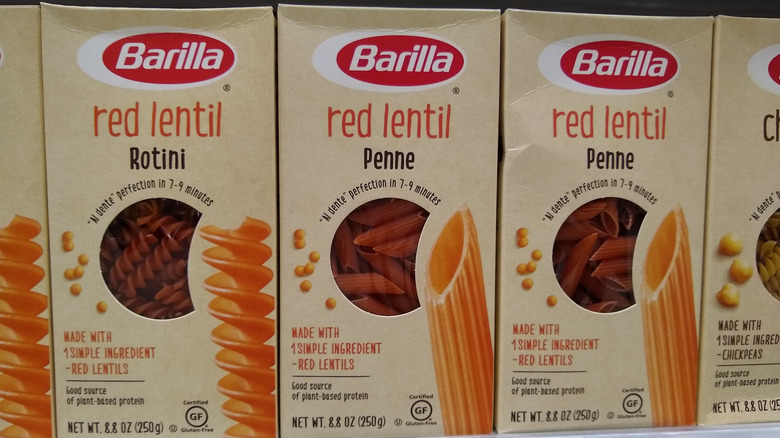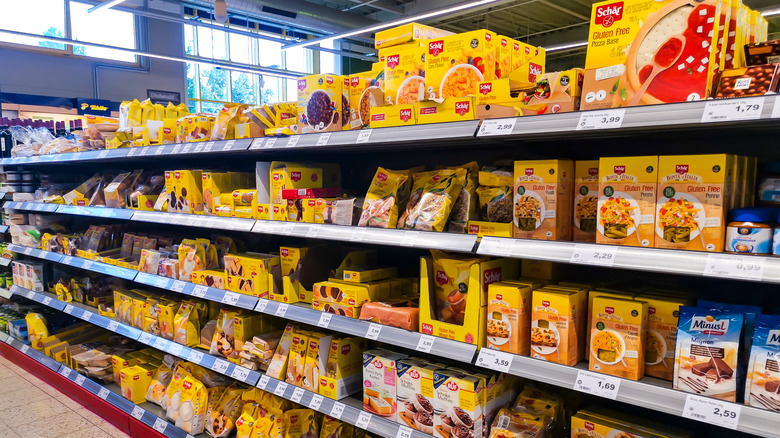The 11 Best Gluten Free Pasta Brands You Should Be Buying
If you follow a gluten-free diet, whether for health reasons or due to preference, you've likely noticed some jarring differences between your favorite wheat-based foods and their gluten-free counterparts. The gluten-free bread? Good luck trying to find something that's not hard as a rock! The gluten-free tortillas? Sure, you could go with corn, but if you go with a "gluten-free" tortilla, your burrito's going to fall apart the moment you pick it up. The gluten-free pasta? Better cook it fast, or it's going to dissolve into mush in the pot.
Finding good gluten-free substitutes for foods like these is difficult, so it feels amazing when you do find substitutes that taste good and don't come with a weird texture. If you're looking specifically for gluten-free pasta that will hold its own against your favorite pasta sauces, soups, and casseroles, you've come to the right place! Based on years of testing, trialing, and cooking batches of pasta that weren't up to snuff, here are some of the best gluten-free pasta brands you should be buying — from price and availability to overall just-like-the-real-thing goodness.
Best overall: Barilla Gluten-Free
Let's start with the heavy hitter first. If you're looking for gluten-free pasta, go to the experts at Barilla. It makes sense that the folks at Barilla Group would turn out a tasty gluten-free pasta. With more than a century of experience, Barilla knows how to make traditional pasta but isn't so married to the tradition that it doesn't constantly improve its products. The brand's stats show it's reformulated nearly 500 of its products since 2010 to make them healthier and has offered more than 50 new products to meet consumer demands.
Barilla's gluten-free offerings are certified gluten-free and non-GMO, made with a blend of corn and rice flour. The corn flour gives the pasta a little more stability than what you might get from gluten-free pasta made solely with rice flour. Thankfully, this means the pasta tastes and feels like traditional pasta. You could switch a family member's regular pasta dish with this brand, and they might not even know the difference.
The downside? Barilla's gluten-free pasta options stick to basic pasta shapes and types like spaghetti, penne, and elbows. If you're looking for specialty shapes, you might be out of luck.
Best if you can't find Barilla: Ronzoni
If you can't find Barilla's gluten-free pasta in your grocery store, see if the store carries gluten-free pasta from Ronzoni. A close second to Barilla, the Ronzoni brand boasts a similarly long heritage, getting its start in the macaroni business in 1915. Like Barilla, Ronzoni's gluten-free pasta offerings are more basic, sticking to classic shapes like rotini, spaghetti, and elbows. However, these pastas derive from rice, corn, and quinoa flour to give the pasta a better texture and taste.
Ronzoni's gluten-free pasta comes from a dedicated gluten-free facility. Like Barilla's gluten-free fare, consumers say that they can feed Ronzoni's gluten-free pasta to non-gluten-free family members, and they never know the difference. On a thread about whether or not trying to find a good gluten-free pasta is worth it, one Reddit user commented, "I usually get Ronzoni or Barilla...My family and friends have eaten it...they say it's exactly the same."
Best for specialty shapes: Jovial Foods
But if you do want those specialty shapes of pasta for your favorite dishes, look to Jovial Foods. This brand specializes in Italian foods created for those with food intolerances, including the gluten-free crowd. Its gluten-free lineup uses brown rice flour and includes shapes you'll be hard-pressed to find elsewhere, including mafalda, egg tagliatelle, manicotti, and casarecce. Additionally, Jovial Foods just announced in a press release that it would be rolling out a star-shaped pasta, which is amazing news to those who loved the now-discontinued Ronzini Pastina.
In addition to Jovial Foods' gluten-free options, the brand also sells grain-free pasta made from cassava (including cassava orzo, which is a difficult find) and einkorn-based pasta. Einkorn is an ancient grain that's often tolerated by those with gluten sensitivities. Quickly growing in popularity, einkorn originates from farming practices in the Middle East approximately 10,000 years ago.
Best for specialty shapes if you can't find Jovial: DeLallo
If you can't find Jovial Foods' specialty shape pasta in your grocery store, keep an eye out for DeLallo. While this supplier may not boast the longevity of a brand like Barilla or Ronzini, and it is on the pricier side, it does offer an array of specialty Italian items. Gluten-free pasta shapes that can be difficult to find otherwise like gnocchi, orzo, and fusilli are all available.
DeLallo makes its gluten-free pasta from several ingredients, which will differ depending on which pasta you buy. For example, their orzo contains a mix of corn and rice flour. The gnocchi comes in several different varieties: You can choose a mixture of potato and rice flour, or one made from chickpea and potato flour. Likewise, the spaghetti comes in two variants, either made from a corn and rice blend or exclusively from rice.
Best from a store brand: Whole Foods 365
But not all of the above brands are available at grocery stores in all regions of the country. Here's a tragedy that has happened to many gluten-intolerant eaters: You finally find a gluten-free pasta you love, but then, down the road, you can't find it at your grocery store of choice. To safeguard yourself from this food frustration, go with a grocery store's gluten-free pasta brand. Hands down, one of the best generic, store-branded gluten-free pasta is made by Whole Foods' 365 brand. The pasta is made with that corn and rice flours blend that makes for a more traditional pasta taste, texture, and appearance. Unfortunately, Whole Foods doesn't offer a ton of different gluten-free pasta shapes: You'll be stuck with your basic penne and spaghetti.
Still, you'll find that this gluten-free pasta benefits from all of the many things that make 365 by Whole Foods products great. In addition to being on the more affordable side, 365 by Whole Foods products are all either certified organic or non-GMO and free from artificial dyes and flavors.
Best for price: Great Value
If you want a widely available, store-brand gluten-free pasta with a low price-point, look to Great Value's brown rice-based gluten-free options. The Walmart brand's gluten-free pasta comes from either brown rice or a mixture of brown rice and quinoa flour. There are three basic pasta shapes to choose from: elbows, penne, or spaghetti.
However, it's worth noting that Great Value's brown rice formula leaves something to be desired. Brown rice pasta doesn't hold up to the cooking process as well as traditional pasta. Sometimes this means you could end up with a pot of mushy, fall-apart noodles. For best results, cook your pasta for a shorter amount of time than you might normally, checking often to ensure you're not overcooking. Additionally, don't turn the heat up too high. A rapid boil can break apart those delicate noodles. Don't rinse the brown rice pasta once done and serve it as soon as possible.
Best brown rice pasta: Tinkyada
Although brown rice gluten-free pasta comes with a learning curve, there are still reasons why you might choose brown rice gluten-free pasta over a gluten-free pasta made with some other ingredient — such as corn, chickpeas, or lentils. Brown rice pasta comes packed with lots of fiber, antioxidants, and micronutrients. It also offers a milder flavor than you might get from other gluten-free pasta, so it'll pair well with lighter sauces.
If the brown rice option is the way you want to go, look for Tinkyada. Unlike a lot of brown rice-based pasta, Tinkyada's pasta is one of the least likely to go mushy or fall apart. It can stand up to a more traditional pasta-cooking method, which is why you might want to choose this pasta if you're planning to add it to a dish that requires a longer cooking time like slow cooker recipes do. Tinkyada offers brown rice spaghetti, elbows, lasagna, penne, spirals, shells, fettuccine, and even kid-friendly shapes like shooting stars, bicycles, and bunnies.
Best almond flour pasta: Cappello's
If you're a home baker or home cook and have been gluten-free for a while, you've likely experimented with all sorts of wheat flour alternatives — like rice flour, oat flour, and coconut flour. One of the most popular options for at-home bakers and cooks that are gluten-free is almond flour. However, it's a bit rarer to see pasta made from almond flour, even if almond is a popular choice for lots of gluten-free baked goods. Still, that's what Cappello's has done with its selection of eight, almond flour-based pasta. Each option is hand-crafted and cooks in just over a minute.
Quite possibly the most amazing thing about this gluten-free pasta brand, though? Cappello's offers ravioli. That's right — ravioli. If you thought you'd never get to sink your teeth into a perfectly cooked pillow filled with cheese again, Cappello's has come to the rescue with its gluten-free (and sometimes dairy-free) butternut squash, five cheese, and spinach and cheese ravioli.
Best chickpea pasta: Banza
Banza has received tons of media attention in the last few years, and for a good reason. The brand makes a great lineup of gluten-free pasta, pizzas, and mac 'n cheese. Their lines offer a good mix of pasta shapes too — including angel hair, shells, and cavatappi. As far as chickpea-based pasta goes, Banza is a great option.
In addition to being gluten-free, the brand also claims that its chickpea pasta comes with a range of health benefits that puts it ahead of traditional pasta. Banza contains 50% more protein than your average serving of traditional pasta, plus triple the fiber and 25% fewer carbs. Of course, there are some things to keep in mind beyond all the benefits.
Chickpea pasta does hold up to sauces and rapid boiling better than rice pasta, but it doesn't taste like traditional pasta. There's a certain chickpea-adjacent flavor there. Still, you can easily cover this by pairing it with stronger flavors. Additionally, chickpea pasta needs to be stored separately from your sauce to prevent noodle break down, so keep that in mind as you're cooking. You don't want to add the sauce directly to your pasta if you plan on having leftovers.
Best lentil pasta: Barilla
Barilla doesn't only make gluten-free pasta using corn and rice flour. It also offers gluten-free pasta made with red lentils. Much like chickpea pasta, lentil pasta comes with extra benefits beyond being gluten-free. As TODAY reported, lentil pasta is high in protein and fiber, which keeps you feeling fuller for longer. However, it might be more difficult to digest for some, as the legumes can cause indigestion for some eaters. It also isn't as soft or gummy as some pasta (looking at you, brown rice pasta) that falls apart during the cooking process. However, it does remain relatively al dente and it doesn't taste precisely like traditional pasta.
The brand offers its red lentil pasta in a few different shapes, including penne and rotini. Due to how well lentil pasta holds its structure during the cooking process, Barilla recommends using it in pasta salad-like recipes that allow the noodle to shine without a heavy sauce. They also recommend pairing it with bulkier ingredients like chopped vegetables.
Best from a trusted gluten-free brand: Schaer
Sometimes you want a product from a brand you know and trust. For gluten-free products, one of those well-respected brands is Schaer. Schaer produces celiac-friendly, gluten-free products, and that's it. Schaer is well known globally for an extensive range of gluten-free products, including bread, pasta, snacks, cookies, and cakes. All of their products contain high-quality ingredients and are reliably good — as far as gluten-free products go, that is.
While Schaer products may be a little harder to find, if you can get your hands on the brand's pasta, you're in for a reliable treat. While your only options are fusilli, penne, and spaghetti, each option hails from Italy and is a mixture of corn flour, rice flour, and vegetable palm oil. The result is gluten-free pasta with a taste and texture similar to traditional pasta. Thankfully, it's also affordable, available at a mid-range price. Pair your pasta with a gluten-free pizza made using one of Schaer's Italian-style pizza crusts, and dig in!
